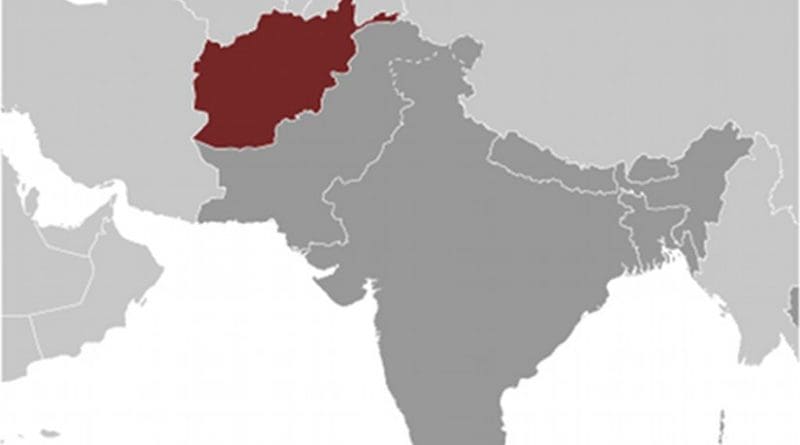Dim Prospects For Afghanistan Peace: Blame Lies With International Community – Analysis
By Gaurav Dixit*
The Afghan Taliban announced the appointment of its new leader, Mullah Haibatullah Akhunzada, four days after the killing of its former head Mullah Mansour. While the world was still speculating whether Mullah Akhunzada’s appointment would really accelerate or hinder the peace process, the Afghan Taliban on May 25 summarily rejected peace talks as a viable solution to bringing the insurgency to an end. Instead, the Afghan Taliban is planning to avenge Mullah Mansour’s killing. This appears to be most accepted understanding of Afghan Taliban’s strategy.
There is always a sense of optimism after demise of Afghan Taliban leaders, but instead, the Taliban often responds with more violence. A sense of optimism for peace negotiation was shown after the demise of Mullah Omar, and a series of negotiation were initiated with Mullah Mansour and yet, the US chose to kill him instead of dealing with him on the table of talks.
A closer look at the events in the last one decade suggests that the prospect of a settlement of the ‘Afghanistan problem’ is as remote today as it was anytime in the past. The international community was never close to peace talks; not even to the secondary level of negotiation. The Taliban never appeared to be interested in any serious negotiation. In a call for peace talks under Mullah Mansour, the Taliban had laid down series of demands, including removal of senior leaders from the UN blacklist, the release of an uncounted list of prisoners, to have its political office in Doha formally recognised. According to released statement by the Taliban, “without them, progress towards peace is not feasible”.
If there is something called ‘good’ bargaining techniques in a negotiating process to achieve maximum gain, then the Afghan Taliban seems to have mastered the act. Certainly, the Taliban knows its strength and that of the international players like the US, and that is why it is always able to evoke a “careful optimism” about the possibility of a peace resolution in Afghanistan, but attached to a set of demands termed as a “preliminary steps for peace”.
Talks between the Afghan Taliban and Afghanistan’s government is necessary evil- indispensable yet fraught with uncertainty. Yet, there is a problem with the concept of peace talks as employed within Afghanistan’s context. Peace talks are generally mooted by the international community to imply that violence be laid off and the broad spectrum of terrorist groups be absorbed into the mainstream through steps covered under reconciliation programs. However, as the case of Afghanistan demonstrates, these initiatives have brought forth nothing on the peace front.
There is no the assessment of the strength of both parties, no common strategy or framework; and, even if there is, it is full of dilemmas. The erratic nature of the Afghan Taliban’s commitment to peace and the imbalance of power in negotiation can be easily guessed by the dangerous set of demands put forward by Taliban as precondition to talks.
For example, demands like the release of an uncounted list of prisoners could easily be shelved for later phase of negotiation, but by putting it as a precondition it has demonstrated that they are talking from a position of strength, and for no small reason given that they still call the shots in as much as 30% of Afghanistan’s territory. The question is not about the prospects of acceptability, but the extent to which these one-sided demands can be accommodated to initiate a peace process. And, this leads us to the second and an important set of dilemmas. The dilemma is whether to have preconditions or not. The preconditions either set the ball rolling for future dialogue or stamp out any possibility, depending on how they are leveraged.
Earlier in January, during the Quadrilateral Coordination Group (QCG) meeting attended by top officials from Pakistan, Afghanistan, China and the United States in Islamabad, Pakistan’s envoy Sartaz Aziz said that no precondition should be attached to peace talks with the Taliban and we must provide incentives to persuade them to join mainstream.
History, hardly presents any evidence where incentives on the bargaining table resolved grievances and guarantee peace. Above all, incentives are granted to those who are on the weaker side of the table. In case of the Taliban, it is well established fact that they are on the stronger side and hardly has anything to lose. The Afghan Taliban sees little to gain at the negotiating table, whereas the other party, NUG wants exactly that ‘little gain’ as a face saver. What appears now, after series of failed peace talks, is that the Taliban’s commitment more of an attempt to extract maximum benefit out of it.
The prospects of peace talks are a misguided disposition. The solution to the problem does not lie with the Afghan Taliban but with the international community which has failed to persuade the Taliban – either by force or by incentives – to step down violence, forget about any condition of cease-fire, precisely because its understanding of peace is significantly different from what the context seeks. The Taliban seems not disposed to make any concession; rather they try to water down and exploit the process. The killing of Mullah Mansour and the appointment of Mullah Akhunzada is only going to revitalize the Taliban’s culture of violence.
*Gaurav Dixit is an independent analyst. He can be reached at: [email protected]

